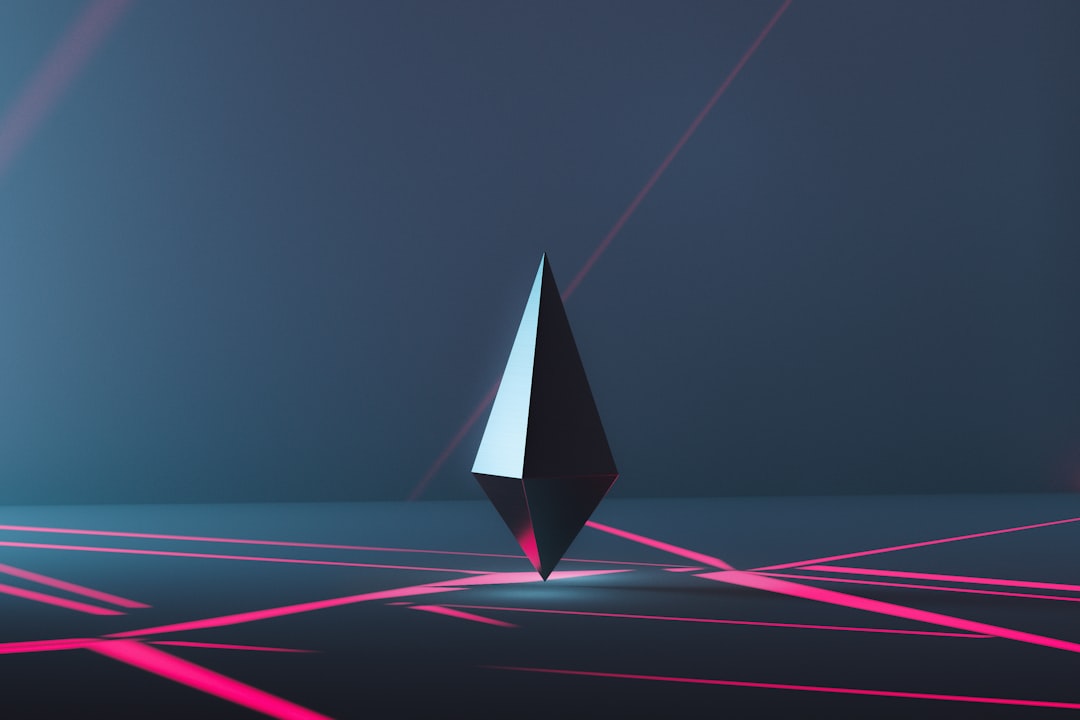Welcome to the exciting world of NFTs in the art world! If you haven’t heard of NFTs yet, don’t worry – you’re not alone. NFTs, or non-fungible tokens, have recently exploded in popularity in the world of digital art and collecting. But what exactly are NFTs, and why are they making such a big splash?
Simply put, NFTs are unique digital assets that are verified on a blockchain. This means that they are one-of-a-kind and cannot be replicated or duplicated. They serve as a way to authenticate and verify ownership of digital art or other digital assets, such as music or video.
But why are NFTs so important in the art world? For one, they offer a new way for artists to monetize their digital creations. In the past, it was difficult for digital artists to sell their work in a way that was secure and verifiable. But with NFTs, artists can now sell their work directly to collectors, with proof of ownership and authenticity built right in.
Furthermore, NFTs offer a level of transparency in the art world that has never been seen before. With traditional art sales, it can be difficult to know the history of a piece of art – where it has been, who has owned it, and so forth. But with NFTs, all of this information is stored on the blockchain, making it easy to track the history of a piece of art from its creation to its current owner.
All of this points to a major shift in the art world, from traditional physical art to digital art that is now just as valuable and sought-after. And with the emergence of NFTs, this shift is only going to continue. So buckle up, and get ready to explore the exciting world of NFTs in the art world!
The Evolution of the Art Market: From Traditional to Digital
The art market has seen significant changes since its inception many centuries ago. In the past, art collectors would visit galleries and auction houses to purchase physical artworks that they could display in their homes or offices. However, with the advent of the internet and digital technologies, the art market has undergone a major shift towards the digital world.
Digital art has been around for several decades, but it was not until the emergence of cryptocurrencies and blockchain technology that the concept of non-fungible tokens (NFTs) became a reality. NFTs are a type of digital asset that are unique and cannot be replaced by any other token. This means that NFTs can be used to represent digital assets such as art, music, videos, and more.
One of the biggest advantages of NFTs is that they allow artists to monetize their digital work in a way that was not possible before. In the past, digital artists struggled to sell their work because it was easy to duplicate and share online. However, with NFTs, digital artists can create unique and valuable pieces of art that can be sold to collectors just like traditional physical artworks.
Moreover, NFTs offer a new level of transparency and security in the art market. Since NFTs are built on blockchain technology, each transaction is recorded on a public ledger that cannot be altered or deleted. This means that buyers and sellers can trust that the artwork they are purchasing is authentic and that the provenance of the artwork is clear.
It is important to note that the rise of NFTs does not mean that traditional physical artworks will become obsolete. Collectors will always value physical artworks for their tangible qualities and historical significance. However, NFTs offer a new and exciting way for collectors to diversify their portfolios and support emerging digital artists.
The evolution of the art market from traditional to digital has paved the way for the emergence of NFTs. NFTs offer numerous benefits to artists and collectors, including the ability to monetize digital art, increased transparency and security, and new opportunities for diversification. As the art world continues to evolve, it will be fascinating to see how NFTs will shape the future of art and collecting.
Since NFTs are built on blockchain technology, each transaction is recorded on a public ledger that cannot be altered or deleted.
Understanding NFTs: How They Work and Their Benefits to Artists and Collectors
As we delve deeper into the world of NFTs (non-fungible tokens), it’s important to understand exactly what they are and how they work. NFTs are unique digital assets that are stored on a blockchain, which is a decentralized digital ledger that records transactions. Unlike traditional cryptocurrencies such as Bitcoin, which are fungible (meaning each unit is interchangeable), NFTs are non-fungible, meaning each one is one-of-a-kind and cannot be replicated.
So, what makes NFTs so special and beneficial to artists and collectors? For starters, NFTs allow artists to monetize their digital creations in ways that were previously impossible. Before the emergence of NFTs, artists had limited options when it came to selling their digital works. They could sell prints or licenses, but the actual digital file could be copied and shared freely, making it difficult to retain ownership and control over their creations.
With NFTs, artists can now sell their digital creations as one-of-a-kind assets that are authenticated on the blockchain. This means that the buyer of an NFT actually owns the original, unique version of the artwork, just like they would if they purchased a physical painting or sculpture. The blockchain ensures that the ownership of the NFT is authenticated and immutably recorded, providing a level of authenticity and transparency that was previously impossible.
For collectors, NFTs offer a new way to invest in and support artists, while also providing a sense of exclusivity and ownership. Collectors can purchase NFTs as a way to directly support their favorite artists and creators, knowing that they are getting a one-of-a-kind asset that is authenticated on the blockchain. This provides a new form of value that goes beyond the aesthetic or sentimental value of a piece of art.
But the benefits of NFTs don’t stop there. NFTs also provide a new level of transparency and accountability in the art world. Each NFT is recorded on the blockchain, which means that the history of ownership and transactions is publicly available and cannot be altered. This makes it easier to verify the authenticity and provenance of a piece of artwork, helping to combat issues like fraud and forgery.
Overall, NFTs represent a significant shift in the art world, offering new opportunities for artists and collectors alike. While there are certainly critics and concerns surrounding NFTs, the potential benefits are hard to ignore. As we continue to explore the world of NFTs and their impact on art and collecting, it will be fascinating to see how this new technology continues to evolve and shape the future of the art world.
For collectors, NFTs offer a new way to invest in and support artists, while also providing a sense of exclusivity and ownership.
NFTs in the Art World: Examples of Successful Sales and Collaborations
The emergence of NFTs in the art world has been met with both curiosity and excitement. Artists and collectors alike are intrigued by the potential that NFTs hold. From record-breaking sales to innovative collaborations, NFTs have already made a significant impact in the art world.
One of the most notable examples of successful NFT sales was the auction of Beeple’s “Everydays: The First 5000 Days” at Christie’s in March 2021. The digital artwork sold for a staggering $69 million, making it the most expensive NFT ever sold. This sale not only broke records but also cemented NFTs as a viable platform for digital art.
Other artists have also found success in the NFT market. Grimes, a musician and visual artist, sold her digital art collection for nearly $6 million in a single day. Trevor Jones, a painter, sold one of his NFT pieces for over $100,000. And even traditional artists like Damien Hirst and Banksy have entered the NFT space.
But it’s not just individual artists who are exploring NFTs. Collectives and galleries are also getting in on the action. The digital art collective known as Fvckrender collaborated with the popular streetwear brand, A Bathing Ape, to release a limited edition NFT collection. And in April 2021, the Venice-based contemporary art gallery, Palazzo Grassi, announced that it would be launching an NFT program for its exhibitions.
The success of these sales and collaborations demonstrates the potential that NFTs hold for artists and collectors. NFTs offer a new way for artists to monetize their digital creations while also providing collectors with a unique opportunity to own a piece of art that exists solely in the digital realm.
Of course, there are still criticisms and concerns surrounding NFTs in the art world, which we will address in the next section. But for now, it’s clear that NFTs have already made an impact and will continue to shape the future of art and collecting. As more artists and collectors enter the NFT space, we can expect to see even more innovative sales and collaborations in the years to come.
Addressing Concerns: Criticisms and Limitations of NFTs in the Art World
As with any new technology or innovation, there are bound to be criticisms and limitations associated with NFTs in the art world. One of the primary concerns is the environmental impact of NFTs. As the process of creating and selling NFTs requires a substantial amount of energy and computing power, some worry that this could contribute to the already pressing issue of climate change.
Another criticism is the elitism that can come with owning and collecting NFTs. As with traditional art collecting, the high price tags associated with some NFTs can make it feel inaccessible to many people. Additionally, some worry that the focus on NFTs may detract from traditional forms of art and the artists who create them.
There are also concerns about copyright and ownership of digital art. While NFTs provide a way for artists to monetize their digital creations and maintain control over them, there is still the potential for disputes and legal issues to arise.
Despite these concerns, it is important to remember that NFTs also offer numerous benefits to artists and collectors. As we discussed in previous sections, NFTs provide a way for artists to receive fair compensation for their work and maintain control over it. For collectors, NFTs offer a new way to invest in and support artists, and a way to own unique and rare pieces of digital art.
It is important to approach the adoption of NFTs in the art world with a critical and open-minded perspective. While there are certainly concerns to address, there is also great potential for growth, innovation, and impact in the art world through NFTs. Only by continuing to explore and push the boundaries of this technology can we truly understand its potential and limitations.
Only by continuing to explore and push the boundaries of this technology can we truly understand its potential and limitations.
The Future of NFTs in the Art World: Potential Impacts and Opportunities
As we have seen in the previous sections of this blog post, NFTs have already made a significant impact on the art world. However, the future of NFTs is even more exciting and promising. Here are some potential impacts and opportunities that NFTs could bring to the art world:
1. Access to Art: With NFTs, art is no longer limited to physical spaces, and anyone with an internet connection can access and own a piece of art. This could democratize the art world and allow for a more diverse and inclusive community of artists and collectors.
2. New Revenue Streams for Artists: NFTs could provide artists with new and innovative ways to monetize their work, such as through royalties on secondary sales. This could empower artists to take control of their careers and financial futures.
3. Increased Transparency and Authenticity: NFTs provide a transparent and tamper-proof way to verify the ownership and authenticity of a piece of art. This could reduce fraud and increase trust in the art market.
4. Enhanced Interaction and Engagement: NFTs could enable new forms of interactive and immersive art experiences, such as virtual reality exhibitions, that would enhance the way we engage with and appreciate art.
5. Integration with Other Technologies: NFTs could be integrated with other emerging technologies, such as blockchain, to create even more innovative and impactful applications for the art world.
Of course, there are also potential challenges and limitations to the future of NFTs in the art world, such as concerns around environmental impact and accessibility. However, as with any new technology, it is important to approach these challenges with a growth mindset and a willingness to learn and adapt.
Overall, the future of NFTs in the art world is full of potential and opportunities. As we continue to explore and experiment with this emerging technology, we have the chance to shape the future of art and collecting in exciting and transformative ways.
This could empower artists to take control of their careers and financial futures.
Conclusion: The Role of NFTs in Shaping the Future of Art and Collecting
As we conclude this blog post, it’s clear that NFTs have the potential to revolutionize the art world. They provide artists with new opportunities to monetize their work and reach a broader audience. At the same time, collectors can invest in digital art with ownership and authenticity guaranteed by blockchain technology.
But the impact of NFTs on the art world goes beyond just financial gains. It’s changing the perception of what art is and how it can be experienced. Digital art was once seen as inferior to traditional art forms like painting and sculpture, but with the rise of NFTs, it’s now being seen as a valuable medium in its own right.
And as we move forward, the future of NFTs remains uncertain. There are still concerns about their environmental impact, accessibility, and the potential for fraud. But with each successful sale and collaboration, we’re learning more about how to navigate these challenges and make NFTs work for everyone involved.
Ultimately, NFTs are a reflection of our changing world and the increasing importance of technology in our daily lives. They represent a new era in art and collecting, one that is more inclusive, diverse, and connected than ever before. So let’s embrace this exciting new frontier, and see where it takes us!





